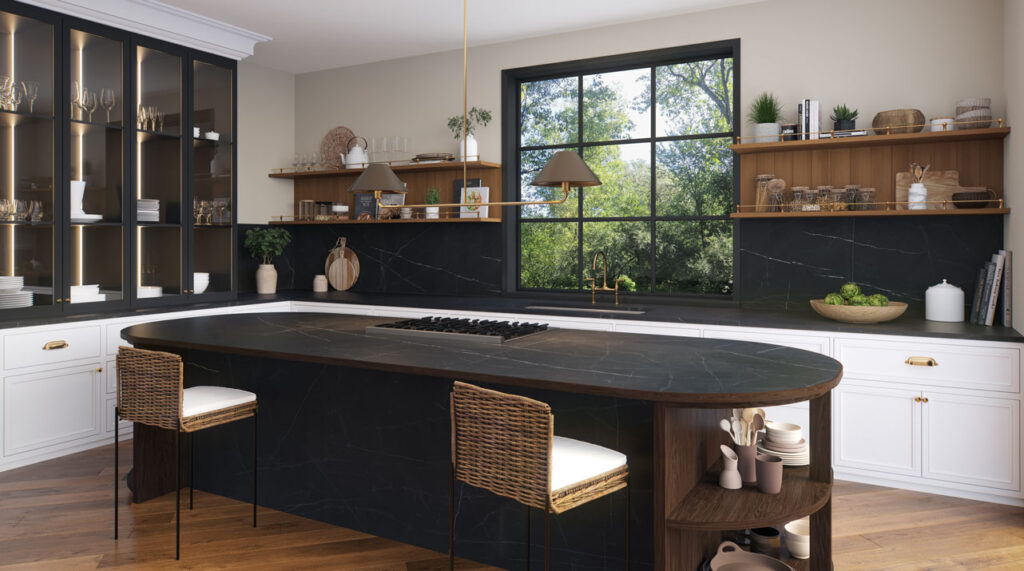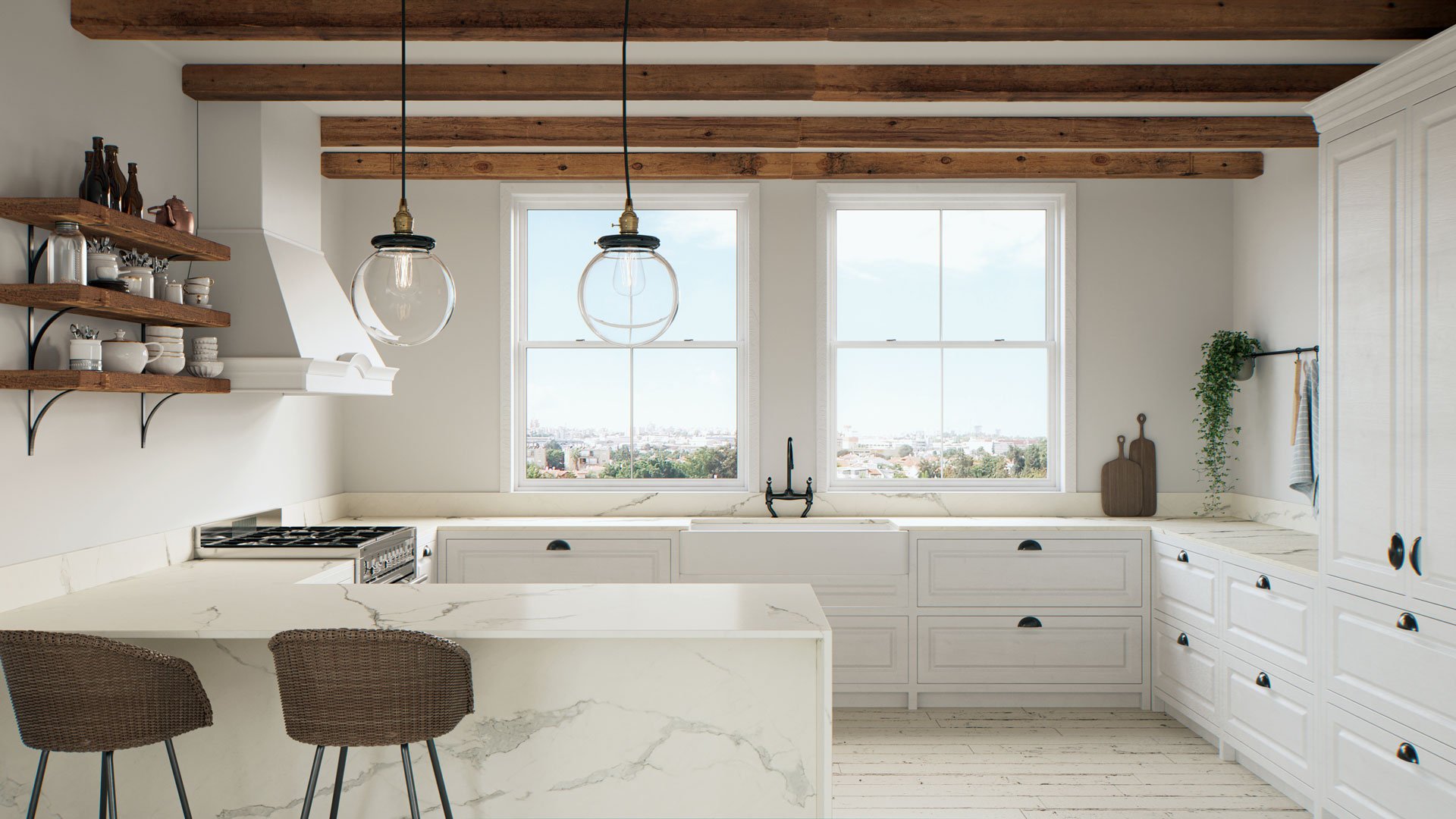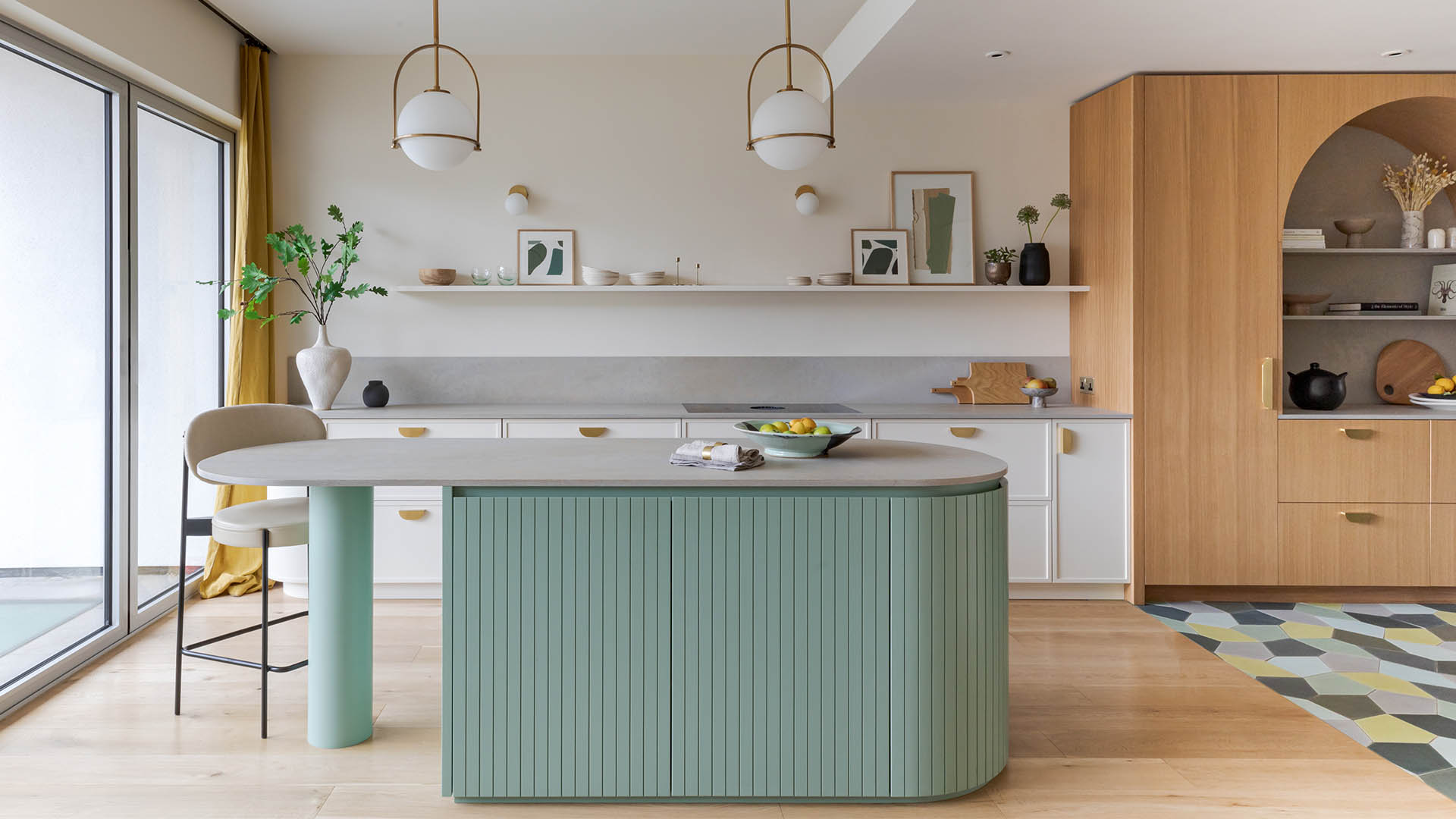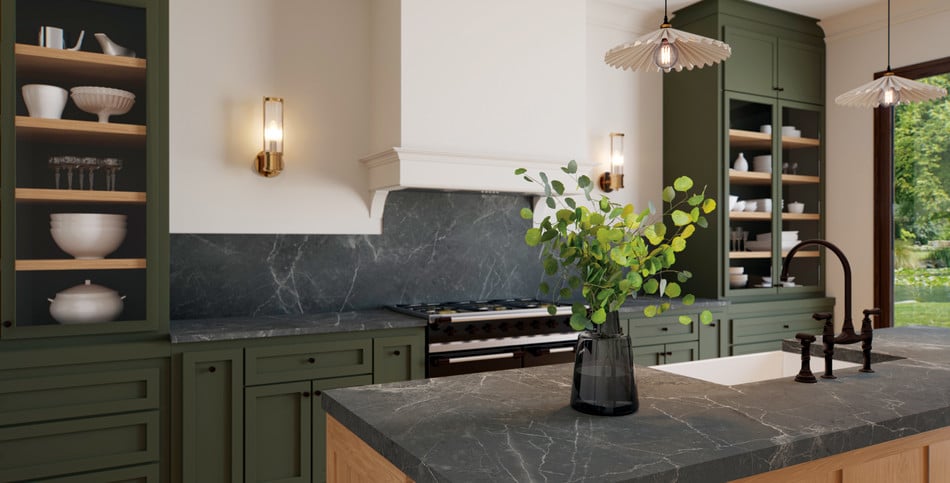
Understandably one of the most popular designs, transitional kitchens give you the best of both worlds. This particular style means homeowners can accommodate the aged architecture of their home with today’s modern technology, or add a vintage feel to their modern apartment kitchen to create a truly unique design. But where do you start? What percentage of your kitchen is devoted to the modern aspect and what percentage to the traditional aspect? In this blog, we will guide you through how to best style a transitional kitchen to suit your home.
Your starting point
First, establish what you’re working with as this can heavily influence how you create your transitional kitchen. Are you working with a completely blank canvas? Do you have a modern kitchen that you want to make traditional? Or perhaps you have a traditional kitchen that you want to modernise but still pay tribute to its history.
To ensure the most straightforward transformation, it’s best to work with what you already have. For example, if you live in an older building or have a more traditional kitchen, use that as your base and create a transitional kitchen through the addition of predominantly modern elements that complement and amplify your current space.
Colours
Usually, the colour scheme of a transitional kitchen is a simple one, and rarely incorporates patterns. Walls, worktops and cabinetry tend to follow a neutral palette, such as whites, beiges and greys. Although to add a modern pop of colour, many homeowners opt for beautiful shades of blue or green to brighten their kitchen.

5000 London Grey | Designer: Humphrey Munson
Lighting
Luckily, with transitional kitchen design, your options for lighting are plentiful. Whether you want just one main light source or a few, you can easily incorporate this into your design and still stay true to the style. We see many transitional kitchens with pendant lighting or recessed lighting with chrome or metallic fittings. Both types of lighting can work well with modern and traditional themes and so are an ideal choice for your transitional kitchen.
Worktops
Homeowners have a wide choice of countertops, depending on their personal preferences. High-quality quartz or porcelain countertops can capture the beauty of natural marble or granite and are often the top choice for transitional kitchens thanks to easier care and maintenance. Waterfall countertops, in particular, are a stylish way to add a modern touch to more traditional kitchens, creating a hallmark of transitional design.
Similarly to transitional kitchen design, Caesarstone’s stunning range of surfaces can too provide you with the best of both worlds. Maybe you just can’t take your mind off a marvellous marble worktop for your transitional kitchen, but you’re just not keen on the regular upkeep and porous nature of this natural stone surface. Caesarstone offers a number of stunning and versatile quartz and porcelain worktops that embody the essence of marble, and 503 Circa is a perfect example of exactly that. Circa is a pure white base dominated by bold light-grey veining in varying volumes, from dramatic strokes outlined by heavier tones to hints of soft greys that are finely etched in the background, creating profound depth that catches the eye.

Cabinets
A transitional kitchen has plenty of storage, and many incorporate shaker cabinets to keep the space free from disarray. Their clean lines and panelled doors in one solid neutral colour, make them an ideal background for an uncluttered look. In fact, the neutral colours of your cabinets can make the kitchen seem bright and airy. Additionally, they allow homeowners to express themselves creatively elsewhere within the space. And depending on what type of hardware and wood colour you choose, you can make Shaker cabinets lean either towards contemporary or traditional.
Appliances
The look of your appliances, if incoherent, can have a negative visual effect on the style of your transitional kitchen. Ensuring your devices are all in one colour can help with the visual harmony of your space. All white or stainless steel is usually the finish of choice for transitional, but panelling is also an option and works well with the traditional elements of this style. Mixing and matching your appliances with the main theme of the room can help create an impressive transitional kitchen. For example, if you have a predominantly modern space, having antique or vintage-looking appliances can add a touch of elegance to your design. However, appliances are leaning toward innovative and energy-efficient designs, so it may be more practical to opt for modern machines paired with other traditional elements.
Floors
Transitional kitchens do not have a set standard for flooring so you can afford to get a bit creative here. Both light and dark flooring can work with this sort of kitchen design but plank flooring is considered the preferred default option as this can work for both a modern and traditional theme. A luxurious dark wooden floor can bring forth a traditional touch to the space, whilst a large, light, clean tile can add a touch of modernity to your kitchen.

You now have the ultimate starting point for all the transitional elements of your space. The next step is to download a copy of our swatch book today and take a look at our stunning range of durable porcelain and quartz worktops to pick the perfect foundation for your transitional kitchen.



